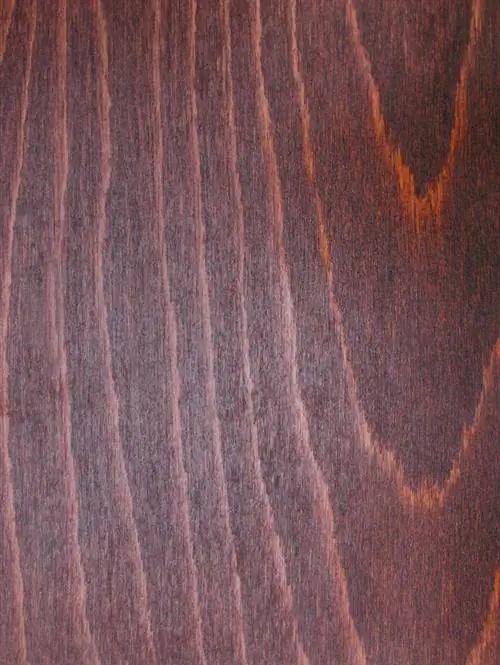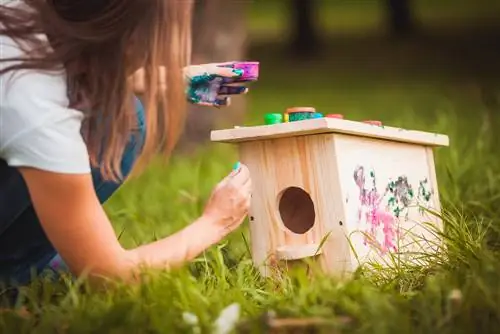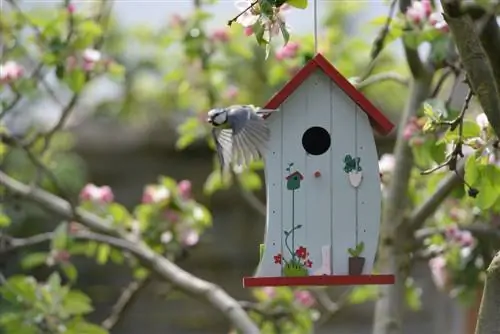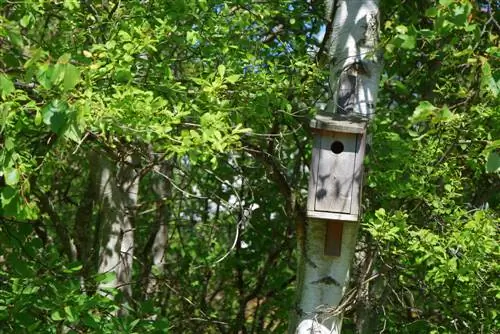- Author admin [email protected].
- Public 2023-12-16 16:46.
- Last modified 2025-01-23 11:21.
In a simple wooden design or colorfully painted, as a covered house or in a classic box shape - the range of nesting boxes is as diverse as the variety of birds. The animals actually don’t care at all about the design of their home. In order for them to feel comfortable, other aspects are important. Here you can read how the design of your nesting box affects the type of guest seeking protection.
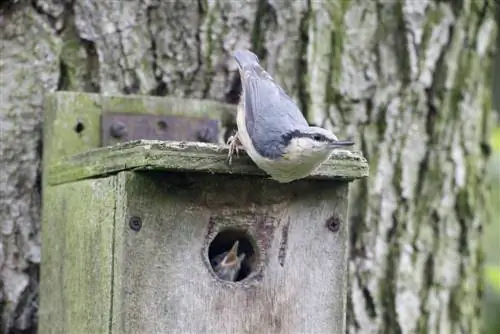
Which nesting box is suitable for which bird?
Which nesting box to choose for which bird? The appropriate size of the entry hole and the height of the attachment are crucial: 26 mm for blue tits, 32 mm for great tits, 34 mm for nuthatches, 45 mm for starlings and open nesting boxes for spotted flycatchers. In general, a minimum height of 3 meters should be maintained.
Key Features
- Size of the entrance hole
- Height of installation
- Size of the nesting box
Size of the entrance hole
The size of the entrance hole plays an important role for the bird breeding in the nesting box. Understandably, this is inevitably related to the bird's body size. A starling, for example, cannot squeeze through a tiny hole. Here you will find information about specific bird species and their preferred hole size:
Diameter of 26 mm
- Blue Tits
- Coal Tit
Diameter of 32 mm
- Great Tit
- crested tit
Diameter of 34 mm
- Nuthatch
- Redstart
- Pied Flycatcher
- Field Sparrow
- House Sparrow
Diameter of 45 mm
- Star
- Great Spotted Woodpecker
Diameter of 80 mm
- Hohltaube
- Jackdaw
Diameter of 130 mm
Tawny Owl
Open nesting boxes without entry hole
- spotted flycatcher
- wagtail
Note: No matter what diameter, so that your nesting box is accepted by the birds, the edge of the entrance hole must not have any splinters or sharp edges.
Height
Furthermore, different bird species also prefer different entry heights. In general, you should maintain a minimum height of 3 meters to make access more difficult for predators. If you install your nesting box in a tree, you should not hide it too much in the crown. Although all birds have different preferences, they all require a clear flight path.
Size
Like the diameter of the entrance hole, the general size of the nesting box plays an important role with regard to the size of the respective birds. Many nesting boxes have a volume of 25 x 25 x 45 cm. The housing should not be too narrow - after all, a brood can consist of up to 16 young animals - on the other hand, the interior should not be too large so that no heat is lost. Incidentally, titmice optimize their shelter by upholstering the nesting box according to their needs.
- More tips
- The visual design of the nesting box is irrelevant
- Nesting boxes with different designs increase species diversity in your garden
- however, these should be placed at least ten meters apart
- keep a diary of the frequency of certain visitors. This will give you an overview of what precautions you need to take to ensure greater species diversity


